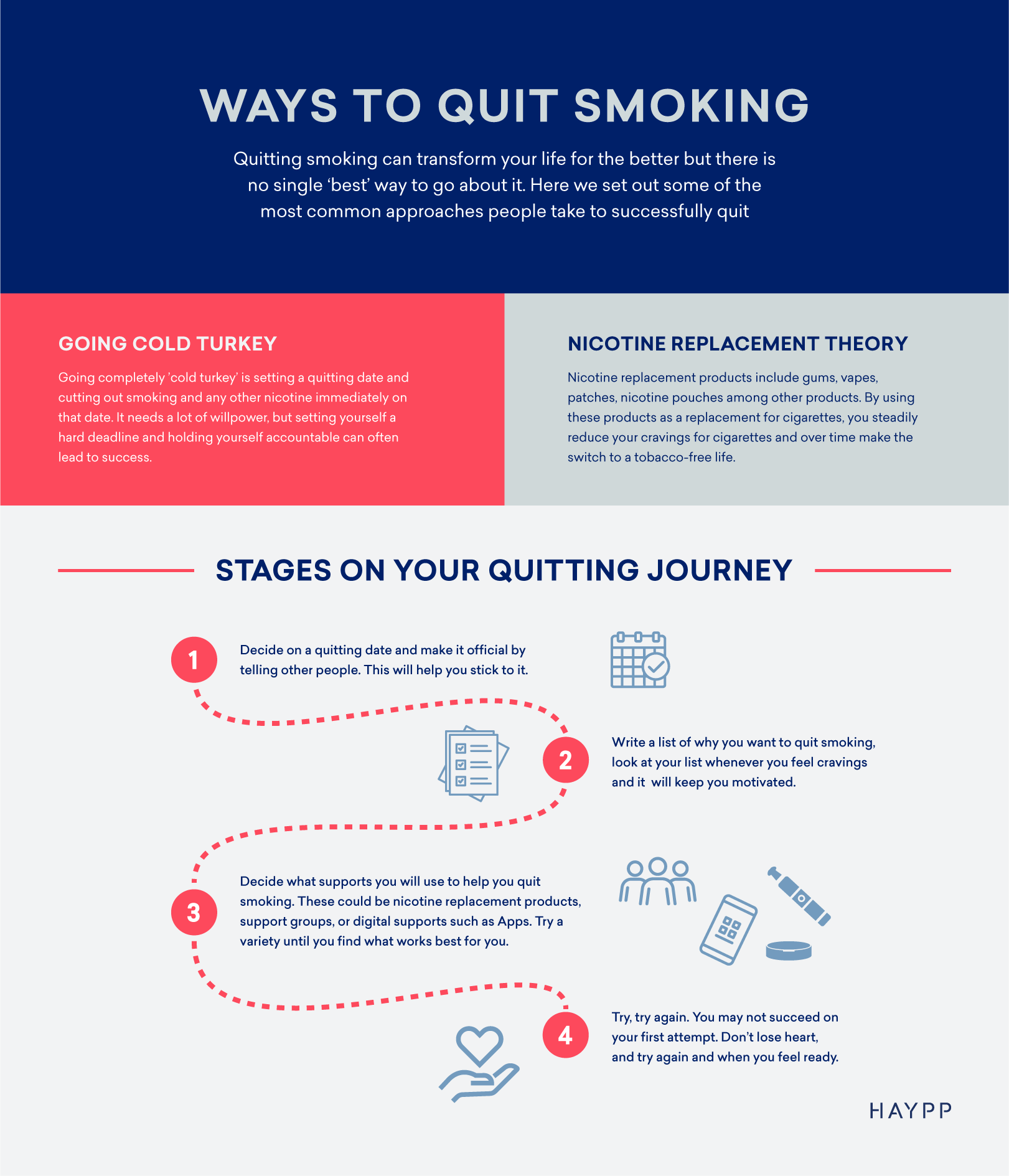Published 2025-01-16
Success Rates of Stop Smoking Services in England
Local authorities across the UK work tirelessly to improve the health and well-being of their communities.

Mapping the Path to a Smoke-free England Which Local Authorities Have the Highest Success Rate? The Most Cost-Effective Stop-smoking Services Local Authorities with the Greatest Success Using Vapes as a Stop-smoking Aid Ranking of Success Rates of Stop-smoking Aids Spotlight on Quit Rates Amongst Pregnant Smokers The Difficulties of Quitting when Pregnant
One way they do this is by providing Stop Smoking Services for local people who want to quit smoking.
These services provide free expert advice, guidance, and support to help smokers quit.
Many of these services have had success in encouraging smokers to quit by switching to alternative nicotine products such as vapes or nicotine patches.
Mapping the Path to a Smoke-free England
At Haypp we want to recognise and support the important work of local authorities to help create a smoke-free future for the UK.
Using data from the NHS on the success of different stop-smoking services, we have created an interactive map to identify the local authorities in England that have had the greatest success in the fight against smoking.
This interactive map shows how local authorities are performing across England.
For example, you can see which authorities have been most successful at helping smokers quit, where has invested the most in stop-smoking services, and which quit-smoking aids have been most effective.
The performance of stop-smoking services has grown even more important in the context of new research from University College London that shows that smoking rates are on the rise in some areas of England after twenty years of decline.
The data used in this interactive map is updated regularly to give an up-to-date picture of stop-smoking services in England.
The data currently being displayed is from April to September 2024.
Which Local Authorities Have the Highest Success Rate?
The average success rate of stop-smoking services across all stop-smoking services in England is 54%, but some services achieve considerably higher success rates. York is once again at the top of the table with an 83% success rate.
- York 83%
- Wokingham 83%
- Redcar and Cleveland 73%
- North Yorkshire 73%
- North East Lincolnshire 73%
The Most Cost-Effective Stop-smoking Services
Dudley has the lowest cost per quitter in this data set, but it has a modest overall budget and has served a small number of clients. Dorset comes second with £145 per successful quitter.
- Dudley (£67)
- Dorset (£145)
- Nottinghamshire (£173)
- Bournemouth, Christchurch and Poole (£173)
- Herefordshire (£221)
Local Authorities with the Greatest Success Using Vapes as a Stop-smoking Aid
Vapes are proving to be the among the most effective stop-smoking aids used by local authorities. Several local authorities show success rates much higher than average amongst those who use vapes to try to quit.
- York (91%)
- Redcar and Cleveland (83%)
- Somerset (83%)
- North Yorkshire (82%)
- Bracknell Forest (81%)
Ranking of Success Rates of Stop-smoking Aids
Nicotine-containing vapes continue to have high rates of success when compared with other stop-smoking aids.
- Nicotine Vapes only (61%)
- Nicotine vapes and NRT together (61%)
- Cystine only (61%)
- Other NRT’s (58%)
- Other stop smoking aid (56%)
- Single NRT’s Only (54%)
- Combination of NRT’s (54%)
- All pharmacotherapy types (54%)
- Bupropion only (54%)
- Non-licensed medication (38%)
- Varencline only (30%)
- Treatment option not recorded (28%)
Spotlight on Quit Rates Amongst Pregnant Smokers
Smoking during pregnancy significantly increases the risk of negative health outcomes for both mother and child.
Smoking during pregnancy is the leading preventable cause of miscarriage, stillbirth, and neonatal death.
The dangers of smoking for pregnant women and unborn children are well known, yet pregnant women still find it very difficult to quit.
The average success rate for pregnant women trying to quit smoking is 49%, compared to an average of 53% for all female quitters.
Ranking the regions according to success rates for pregnant quitters, we can see that in the North West, just 37% of those that set a quit date reported that they had quit successfully.
- London (65%)
- Yorkshire and the Humber (57%)
- East of England (51%)
- South East (49%)
- West Midlands (48%)
- South West (47%)
- East Midlands (42%)
- North East (40%)
- North West (37%)
The Difficulties of Quitting when Pregnant
There are many reasons why it may be more difficult for a pregnant smoker to quit.
There may be additional psychological and social stresses on women during pregnancy.
Women may also be hesitant to use nicotine replacement therapies, preferring instead to try to go cold turkey, which can be even more challenging.
According to the NHS, 2024 saw the biggest annual fall in smoking during pregnancy since records began, so progress is being made.
Incentives such as voucher schemes have also been shown to be effective in helping women to stop smoking during pregnancy.
The NHS provides specialised support and interventions for pregnant smokers.
Clear and impartial information about nicotine replacement therapies, including vapes, would help women to make informed decisions about how NRTs could help them kick the habit for good.

Related articles




